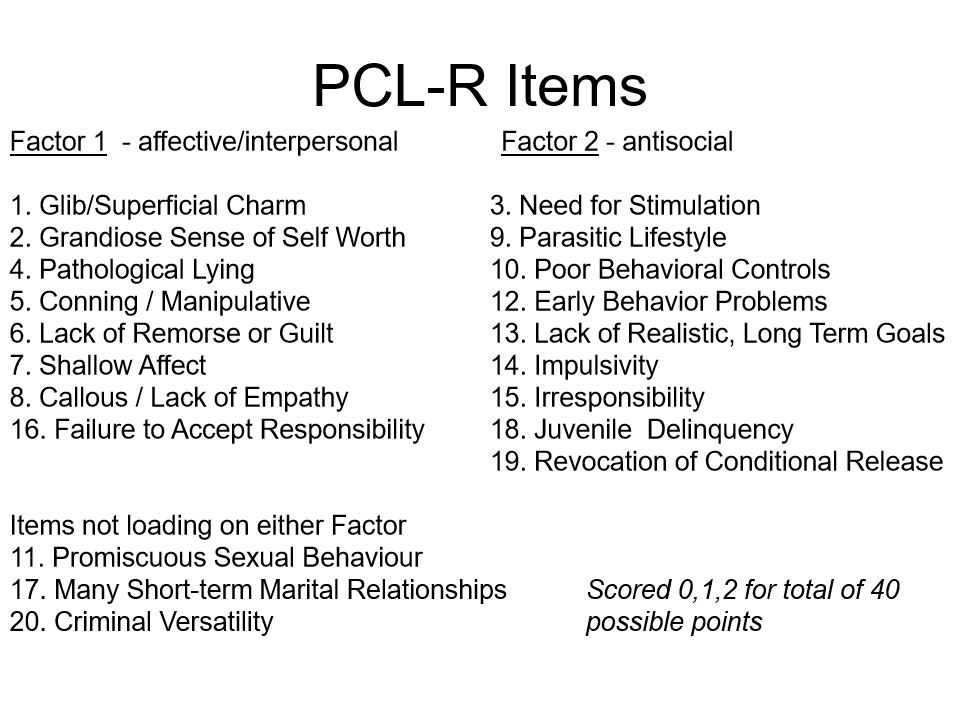Lecture 13: Psychopathy
1/5
There's no tags or description
Looks like no tags are added yet.
Name | Mastery | Learn | Test | Matching | Spaced |
|---|
No study sessions yet.
6 Terms
Importance of psychopathy
psychopaths make up 25% of male prison population but perform more than 50% of violent crime
psychopaths recidivate (reoffend) 3-4x more than non-psychopaths following release from prison
they aren’t all in jail and not all are criminals
use people and the system to get what they want, good at mimicking emotions they are important to manipulate
must protect ourselves and not be a victim of their games
23-25% are psychopaths in the men prisons
20-22% in the female prison
Characteristics
Interpersonally = egocentric, manipulative, dominant, cold-hearted
Affectively = labile emotions, no long lasting bonds to people or principles or goals, lack of empathy or guilt
Behaviourally = impulsive, sensation-seeking, violate social norms
*Personality disorder = considered throughout the lifespan, developmental, in existence, have examples of childhood and onwards
What do we assess these characteristics with
Hare Psychopathy Checklist - Revised (PCL -R)
Uses of the checklist
assessing and diagnosing psychopathy for research and clinical purposes
parole board hearings/dangerous offender verdicts
best predictive tool for recidivism(reoffending)/ risk assessments
Composition of the checklist
20 characteristics (you get a score of o,1, or 2 for each)
○ 0 = It doesn’t pertain to the person at all
○ 1 = pertains to them in some aspects of their life
○ 2 = pertains to them in most aspects of their life
Total score out of 40, cut off of 30 is used for research purposes (only take 22 and lower for the non-psychopaths, farther away from cut off)
Scoring a 30 or higher out of 40 = psychopath
semi-structured interview (ask set questions but get go off book and ask any question you want to collect more info) and collateral information (1-2 hours)
childhood, relationships, work experience, family history, criminal history, general view of life and people
PCL-R items
